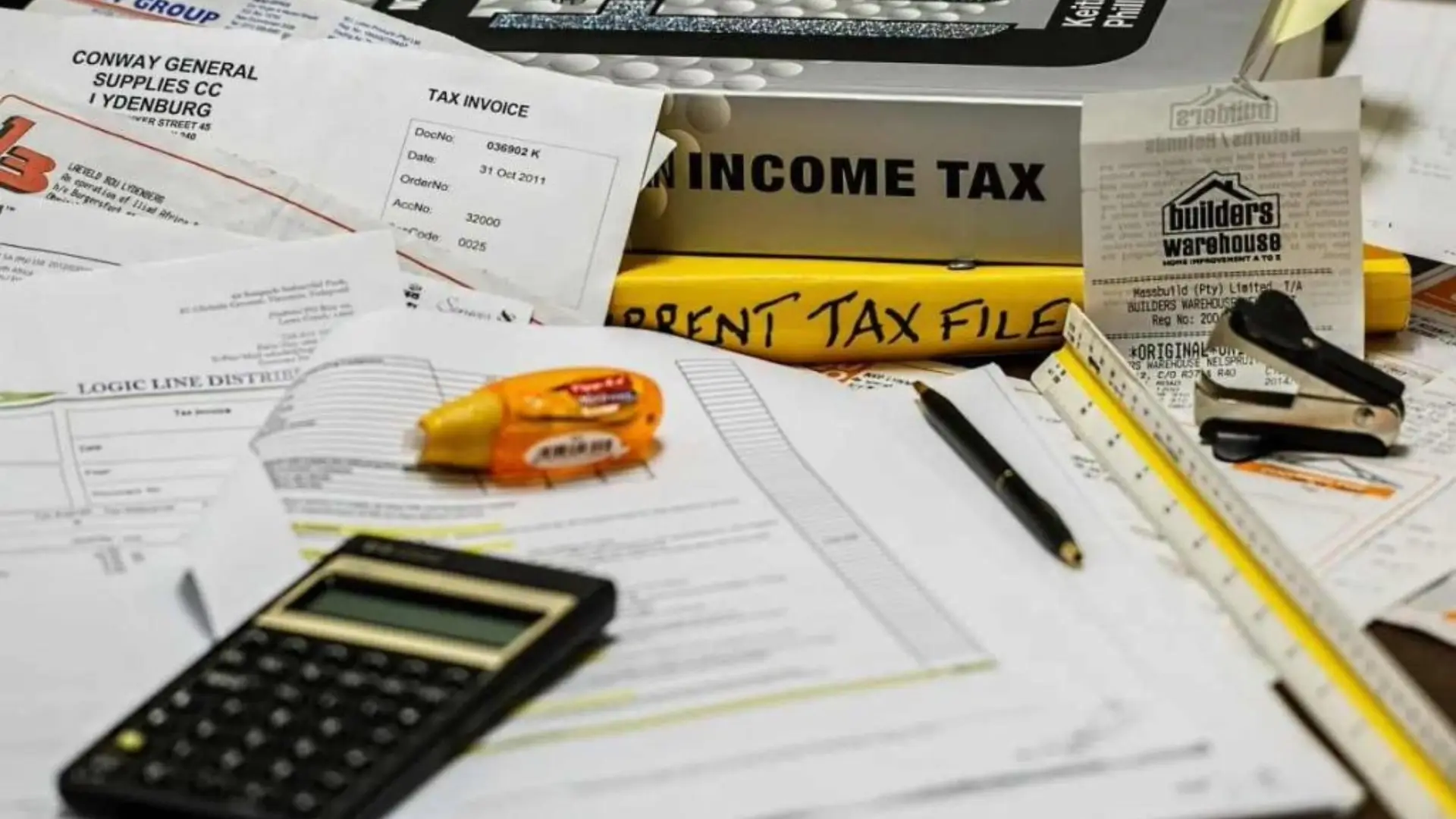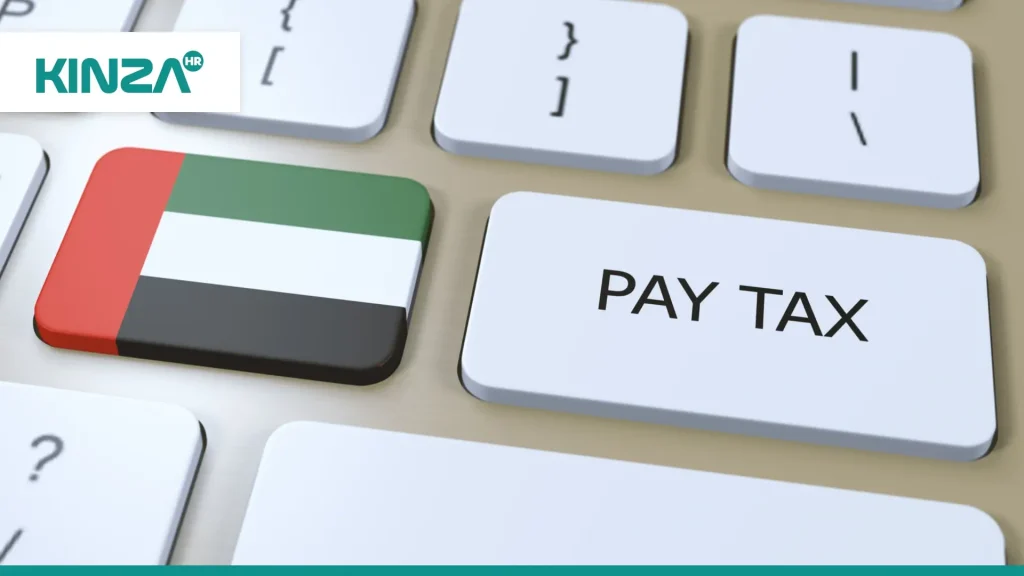The companies of UAE must pay specific taxes. They do so in order to perform their activities in the country. The most important one is the VAT in UAE. About which you must be aware of. Especially if you are a business owner. Then you must learn how to carry out the calculation and payment process.
This guide helps you learn everything about the Value Added Tax in the UAE. You will learn to calculate it. Also, guides you to complete the registration process for VAT in this country. Furthermore, we will provide you with vital information about the process to claim VAT at the Dubai Airport as well.
What is the Value Added Tax (VAT) in the UAE?

Calculate VAT in UAE
It is essential to have a clear understanding of the VAT for any person who runs a business. The VAT is a fee that the government charges on several types of:
- Goods
- Services
- Income, and
- Similar transactions. The main purpose of this particular fee is to finance public services, as well as government expenditure and more.
It is a general consumption tax that applies to most of the transactions. This tax is applied in the UAE but in other countries too. The VAT rate and calculation vary depending on the country where you operate your business.
The UAE government introduced this tax at a rate of 5 percent in the year 2018. It has not changed for now. Businesses will charge this fee on behalf of the government. The authorities will use it to make different improvements. They will use this income source to provide high-quality public services. While improving the country’s economy and society.
How does VAT work in the UAE?
To understand how the VAT in UAE works, let’s use the process of selling vegetables. These steps explain how the VAT must be collected:
- Farmers who grow vegetables will need to collect the VAT when selling them to a factory. And if they sell their vegetable at a specific price, they must add 5 percent of that price, which will be the VAT.
- Then, the factory gets the vegetables and starts manufacturing goods with them. And after that, the factory sets a price for the finished product and sells it to retail chains. But it must also charge an additional 5 percent of the product’s price for the VAT.
- Lastly, the retailer that acquired the product will sell it to end consumers for a set price. And just like the farmers and the factory did, the retailer must charge an additional 5% of the product’s price. End consumers are the ones who end up paying the VAT after this process.
Why is the VAT important for the country’s economy?
After in-depth studies, the government decided to introduce VAT in the UAE. The purpose behind this is to benefit the nation. Besides becoming a favorable element, the UAE authorities also discovered that it would not impact the business sector. Tax implementation would not affect the country’s position and competitiveness.
It is also worth mentioning that it is among the lowest VAT rates globally. Many foreign investors find the UAE an attractive place to start their businesses
Using the VAT in the UAE as an income source can help the country in many other aspects. It aids in improving public services. Also, it reduces the dependence on oil and other hydrocarbons as income sources. VAT is an important element that helps the national economy. It is one of the most important taxes.
Who is required to register and pay VAT in UAE?
It is mandatory for all businesses to complete the VAT registration process in the UAE. It depends on one main factor. If their taxable supplies and imports exceed AED 375,000 on an annual basis. Then, it is mandatory to register for VAT. There are other businesses that can register for VAT. However, it is not mandatory for them.
Two main conditions under which businesses can voluntarily register for VAT in the UAE. These are the following:
- If their imports exceed the voluntary registration threshold. The threshold is AED 187,500. For instance, it does not exceed the mandatory registration threshold of AED 375,000.
- And if the expenses of those businesses exceed the voluntary registration threshold, they must be aware of something about it. This is an opportunity that was designed to enable start-up businesses/companies with no turnover to register for VAT.
The voluntary registration for VAT is optional if your business meets the mentioned conditions. Therefore, it is up to you to determine if registering for VAT is a benefit or disadvantage for your business. If you consult this matter with our specialists, it will be easier to make the right decision.
How should you calculate VAT in UAE?
To calculate the Value Added Tax correctly, you can use a VAT calculator or calculate it manually. You can also learn how to calculate it. For this, it is vital to know about some basic concepts first. For instance, output and input VAT are some of the concepts. They are related to the VAT calculation that you should know.
It is essential for businesses to keep track of their sales purchase and expenses, which must include the tax paid. And when it comes to the tax payable by a particular taxpayer, it is equal to the tax collected on output and input. The tax collected on output is sales. The tax paid on input purchases. Take a look at an example to understand the calculation process:
A coffee shop spends AED 100,000 to obtain raw materials. Remember that the VAT rate is 5 percent. Let’s add it as the input tax. The total calculation will be=AED 105,000
AED 100,000 plus its 5%, which is AED 5,000
The coffee shop makes sales of AED 200,000. They must pay the output tax, which is also 5 percent. The total calculation will be AED 210,000
AED 200,000 plus its 5%, which is AED 10,000.
So, the net VAT payable is AED 5,000
(AED 10,000 minus AED 5,000).
3. How can you pay VAT in UAE online?

VAT Calculator UAE
As a registered taxpayer, you have to learn how to pay VAT online. You must file the VAT returns either on a quarterly or monthly basis. Make sure to follow these steps to make a VAT payment online:
- First log in to the FTA portal. Go to the dashboard. Now, select the “My Payment” option.
- You will see the amount you must pay under the “VAT & Penalty Payment” section. It is the Total Outstanding Liability.
- And below that section, you can enter the amount you desire to pay. Then, click “Make Payment”.
- On clicking “Make Payment”, it will be redirected to the “Payment Information” section. Now, must click “Pay Now”. It will be redirected to the e-Dirham gateway.
- Then, you can proceed with the payment, which you can make through an e-Dirham or non-e-Dirham card. Confirm the transaction and you will successfully complete the VAT payment.
Although you can make a partial payment. Remember that you must pay the total amount before the due date. Failure to pay before the due date or you will face some penalties.
Learn how you can apply for VAT registration in the UAE
Before paying VAT, you must complete your registration for VAT through the FTA. You must follow several simple steps. These steps include:
- Open the VAT registration portal on the FTA official website. Here you can create your user account.
- On creating your account, you will receive an email to verify your details. After this, you can activate your new account. You will be able to log in to the portal with your user credentials.
- Now, you have to go to the VAT registration form and provide the required details to complete the process.
- Ensure to provide all necessary documents and meet the requirements to finish the process. Below, you will learn more about these elements.
On application completion, must click “Submit”. The FTA will review your application and send you an email to confirm your TRN
What are the requirements for completing the VAT registration?
Provide the following documents during the application process to register for VAT in UAE:
- A passport copy.
- Your Emirates ID.
- Your Trade License.
And any official documents that authorize you to conduct business activities in the UAE.
Apart from your information, you also need to submit information about your business. And when it comes to your business, you must provide the following details about it:
- A description of your business and its activities.
- Turnover figures for the last 12 months.
- The projected turnover figures for the future.
- And the expected values of its imports and exports.
After providing these required documents, you will complete the process.
5. How can you claim VAT at Dubai Airport?
The UAE government implemented a scheme about VAT refunds for taxable persons, which involves different situations/conditions to claim VAT refunds. And you can claim VAT refunds if you are eligible for them under certain special schemes. Among the taxable persons who are eligible for VAT refunds in the UAE, you can find these:
- Foreign businesses.
- Tourists.
- UAE nationals building new residences.
- Foreign governments, international organizations, and diplomatic bodies.
A tourist can claim VAT refunds incurred on purchases, as per the FTA rules. You should know that there is a digital system implemented at airports of Dubai, Abu Dhabi, and Sharjah. This system of the Tax Refund for Tourists Scheme was the first phase of this initiative. Later on, the system became fully operational, and it now includes all airports in the UAE, and land/sea ports too.
And to get a VAT refund, you only need to follow two steps. The first one is asking the shopkeeper to buy tax free, and then, they activate the refund procedure. And the second step is validating your purchase at the airport before departure. This way, you will be able to collect your VAT refund.
6. How can Kinza HR help you learn more about VAT in UAE?
With Kinza HR by your side, the best specialists will help you understand legal matters like this in the UAE. Furthermore, we will provide you with different services to help you improve your company, including Emiratisation Program, Employer of Record UAE, etc. Also,Kinza HR provides temp staffing solutions, permanent hiring solutions, payroll outsourcing services, and many others to take your business to the next level.


